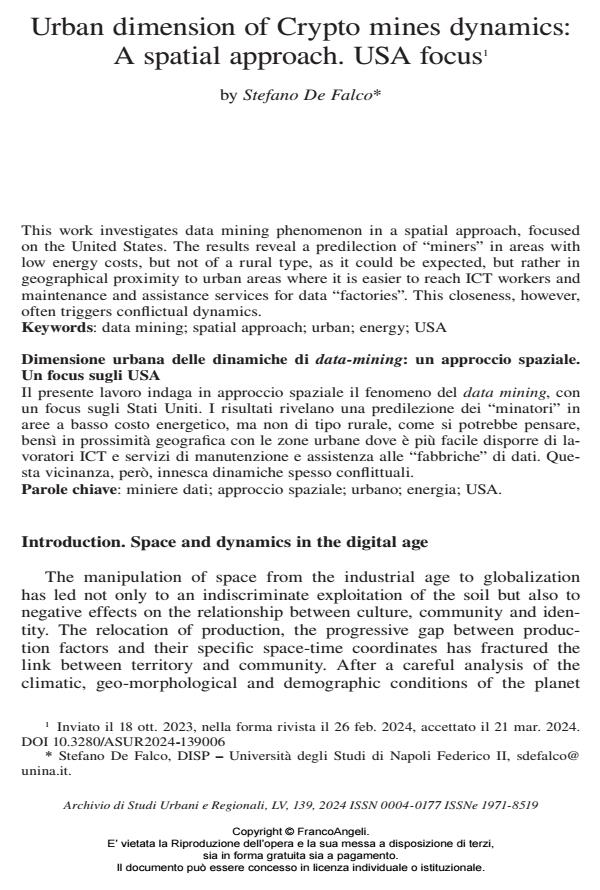Urban dimension of Crypto mines dynamics: A spatial approach. USA focus
Titolo Rivista ARCHIVIO DI STUDI URBANI E REGIONALI
Autori/Curatori Stefano De Falco
Anno di pubblicazione 2024 Fascicolo 2024/139
Lingua Inglese Numero pagine 22 P. 115-136 Dimensione file 336 KB
DOI 10.3280/ASUR2024-139006
Il DOI è il codice a barre della proprietà intellettuale: per saperne di più
clicca qui
Qui sotto puoi vedere in anteprima la prima pagina di questo articolo.
Se questo articolo ti interessa, lo puoi acquistare (e scaricare in formato pdf) seguendo le facili indicazioni per acquistare il download credit. Acquista Download Credits per scaricare questo Articolo in formato PDF

FrancoAngeli è membro della Publishers International Linking Association, Inc (PILA)associazione indipendente e non profit per facilitare (attraverso i servizi tecnologici implementati da CrossRef.org) l’accesso degli studiosi ai contenuti digitali nelle pubblicazioni professionali e scientifiche
This work investigates data mining phenomenon in a spatial approach, focused on the United States. The results reveal a predilection of “miners” in areas with low energy costs, but not of a rural type, as it could be expected, but rather in geographical proximity to urban areas where it is easier to reach ICT workers and maintenance and assistance services for data “factories”. This closeness, however, often triggers conflictual dynamics.
Il presente lavoro indaga in approccio spaziale il fenomeno del data mining, con un focus sugli Stati Uniti. I risultati rivelano una predilezione dei “minatori” in aree a basso costo energetico, ma non di tipo rurale, come si potrebbe pensare, bensì in prossimità geografica con le zone urbane dove è più facile disporre di lavoratori ICT e servizi di manutenzione e assistenza alle “fabbriche” di dati. Questa vicinanza, però, innesca dinamiche spesso conflittuali.
Parole chiave:miniere dati; approccio spaziale; urbano; energia; USA.
Stefano De Falco, Urban dimension of Crypto mines dynamics: A spatial approach. USA focus in "ARCHIVIO DI STUDI URBANI E REGIONALI" 139/2024, pp 115-136, DOI: 10.3280/ASUR2024-139006